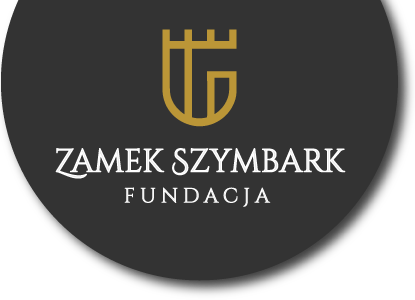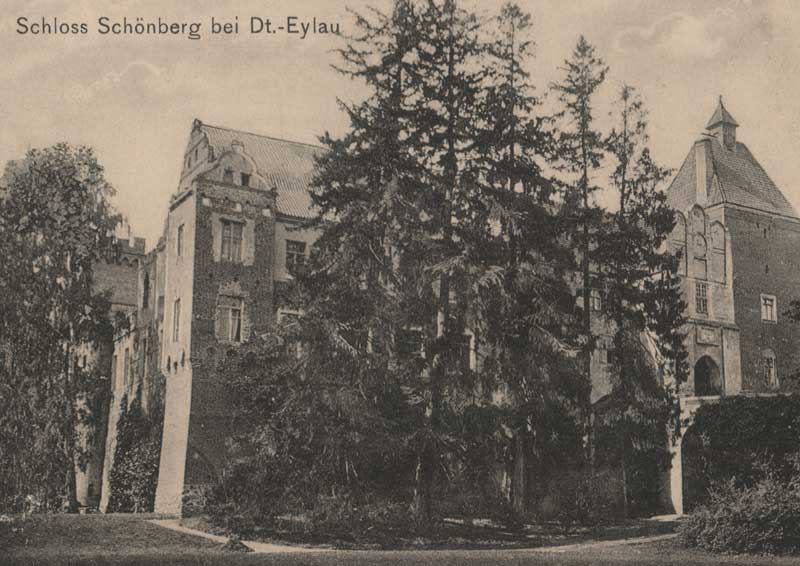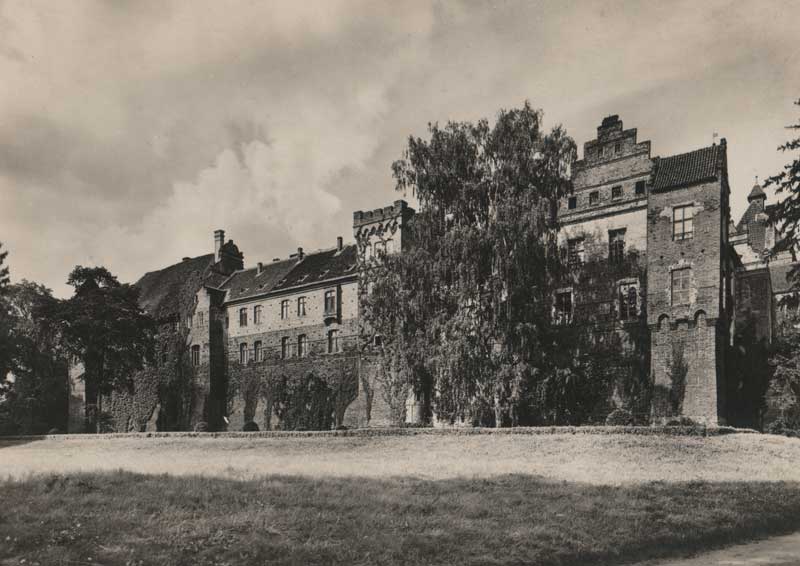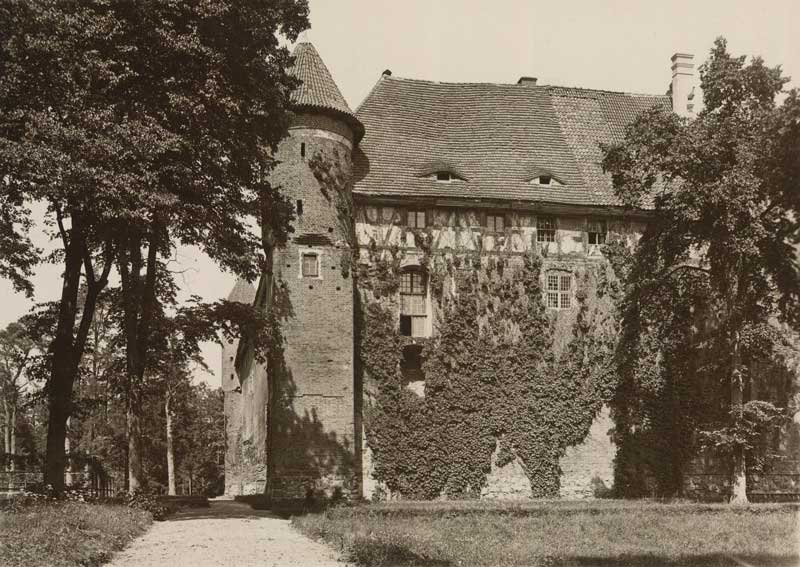
The tour starts at the point marked on the map with number 1, opposite the gate, on the forecourt leading to the arcade bridge.

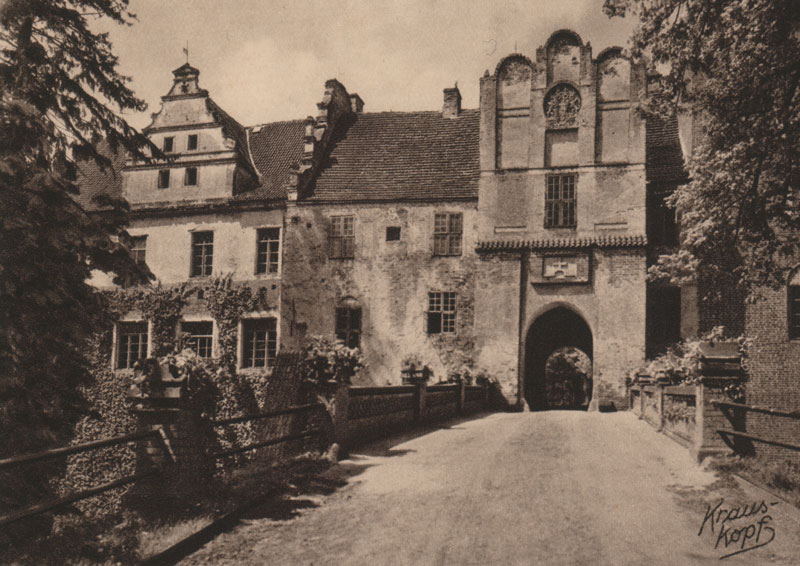

The castle changed hands during the Thirteen Years’ War, when it was also seriously damaged. It was reconstructed almost immediately and its structure and defensive qualities were reinforced. In 1466, after the second Peace of Thorn, the castle remained within the borders of the Order of Teutonic Knights to be taken over by the Polish army in 1520 for a short time. Once the State of the Teutonic Order was secularised in 1525, Albrecht Hohenzollern became the owner of the castle.

Apart from the eastern part of the walls with the entrance gate, also the southern side of the castle is visible from the place where we are now. A characteristic turret with a spiral staircase, which made it possible to descend to the park and tennis courts located by the castle (they were still used after the war), was added to the fortified tower as late as in the 20th century. Characteristic window frames placed in the window openings of the eastern wall are also visible from here. This is the remnant of the shooting of The Ogre starring John Malkovich.
![]() Let us move to the point marked on the map with number 3. The castle passed into the hands of Polentz family (the coat of arms of the family is located above the entrance gate). The reconstruction of the castle started at that time, which definitely transformed it from a Gothic stronghold into a Renaissance residence. A new phase in the history of the castle started in 1699, when Ernst Finck von Finckenstein became its owner. The estate of Szymbark remained in the hands of Finckenstein family until 1945.
Let us move to the point marked on the map with number 3. The castle passed into the hands of Polentz family (the coat of arms of the family is located above the entrance gate). The reconstruction of the castle started at that time, which definitely transformed it from a Gothic stronghold into a Renaissance residence. A new phase in the history of the castle started in 1699, when Ernst Finck von Finckenstein became its owner. The estate of Szymbark remained in the hands of Finckenstein family until 1945.
In the 20th century, the castle owned by Finckensteins became a modern facility for those days. New water systems and wiring as well as phones were installed in the castle in the 20th century. The family was known for its passion for luxury at that time. There were sports cars under the castle, racehorses in the castle stable, tennis courts were built by the walls and plants brought from all over the world were planted in the park.


This is the end of our tour. We recommend having a virtual tour around the castle courtyard and a walk to the family cemetery as well as two beauty spots.
Zadanie publiczne jest współfinansowane ze środków Samorządu
Województwa Warmińsko-Mazurskiego na podstawie umowy T/5/2020 oraz TS/11/2021


Zadanie publiczne jest współfinansowane ze środków Samorządu
Województwa Warmińsko-Mazurskiego na podstawie umowy T/5/2020 oraz TS/11/2021
